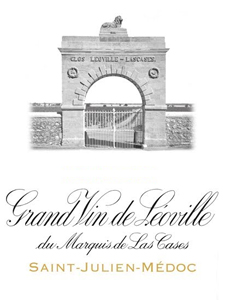| Region | |
|---|---|
| Subregion | France > Bordeaux > Left Bank > St Julien |
| Colour | Red |
| Type | Still |


A vintage that tended to be underrated early on, due to its youthful austerity and the excitement generated by its two immediate predecessors, the 2011 Léoville Las Cases is emerging as a sleeper that will delight Médoc purists. Unwinding in the glass with aromas of cassis, dark berries, sweet spices, loamy soil, cigar wrapper and pencil shavings, it's medium to full-bodied, concentrated and structured, with chewy tannins, tangy acids and a long, penetrating finish. Built for the long haul, its austerity without asperity is immensely appealing in a world of ever sweeter, softer Bordeaux. 2025 - 2070
One of the more formidably backward and potentially long-lived wines of the vintage, the medium to full-bodied 2011 Leoville Las Cases behaves like a first-growth, which in a sense it truly is. Revealing a dense inky/purple color, it is a structured, rich, impressively endowed effort that is meant for the long haul. Atypical for this vintage, it requires 5-7 years of bottle age and should drink well for two decades thereafter. The final blend was 76% Cabernet Sauvignon and the balance equal parts Merlot and Cabernet Franc. Yields were a low 27 hectoliters per hectare, and the natural alcohol achieved 13.4%.
The 2011 Léoville Las-Cases is much more introspective on the nose than its peers, though it unfolds to reveal quite mineral-driven black fruit, leather and graphite aromas. It never fully lets go. The palate is medium-bodied with grainy tannins, fine acidity, fresh and lively with a focused, graphite-tinged finish. Maybe a little conservative in keeping with the vintage, though this is well crafted. Tasted blind at the annual 10-Year-On tasting. 2022 - 2040
This shows so much spice and berry character on the nose. Focused and beautiful. Full body with a clearly outstanding core of fruit and polished tannins. The finish lasts for minutes. Reminds me of the superb 1996. Try in 2020.
In the last 25 years this has been the top-performing non-1st Growth in the Médoc. The vines are situated alongside those of Chateau Latour and the rigorous pursuit of quality is demonstrated by the demotion of much of the production into the excellent Clos du Marquis. Now the young vines are not even used for Clos du Marquis with the creation of "Le Petit Lion". Lascases will never be cheap but this is a wine that wants to taste like a First Growth and it frequently does. A big brute of a wine with an impressive core of dense black fruit. Strong and muscular but finishes with quite aggressive tannins. This is clearly a big but structured wine in the style of 1986, 1988, and 1996. Certainly one for the long term.
***Rated 10 in the top 100 WS wines of 2014***
This has some toast to shed, but retains a terrific core of crushed plum and blackberry confiture. Has a beautiful ripple of charcoal for texture, honest acidity for balance and a bolt of iron that
keeps this firmly grounded. A brick-house Cabernet. Best from 2018 through 2030.
There are black fruits and red fruits on the nose an attractive complexity of flavour. Cassis and black cherry enriches the mid palate supported by firm tannins. There is richness sweetness of fruit towards the back but a slight lack of concentration and length.
I tasted this twice during en primeur week, and I am convinced that it is one of the wines of the vintage, just as it was in 2007, another tricky harvest. It's a thick, sinewy, tightly structured red with concentrated mocha and black fruits surrounded by powerful but finely realised tannins. A little less extracted than Las Cases can often be in its youth, but this is still a serious and very classy claret. 12+ years.
Dense colour, nose still shut in yet the richness is there and the fruit will come out, a real statement of vineyard style, a superb long-term wine. Drink 2020-2050.
One of the thrilling successes of the vintage is, not surprisingly, the 2011 Leoville Las Cases. Analytically, this ripe wine has statistical numbers that are almost identical to their 2010. The fruit was cropped at 27 hectoliters per hectare, the wine aged in 80% new French oak, and the final blend of 76% Cabernet Sauvignon, 12% Merlot and 12% Cabernet Franc came in at 13.4% natural alcohol. It boasts an opaque inky/purple color along with gloriously pure aromas of creme de cassis, black raspberries, vanillin and crushed rocks. Medium to full-bodied with abundant glycerin and ripe but noticeable tannin, this beauty is potentially one of the longest lived and finest wines of the vintage. It should be drinkable in 5-6 years and last for 2-3 decades.
The Grand Vin is a blend of 76% Cabernet Sauvignon, 12% Merlot and 12% Cabernet Franc cropped at just 27hl/ha and raised in 80% new oak. It has a comparatively opulent bouquet compared to its peers with sumptuous blackberry, wild strawberry, minerals and cedar, offering touches of Margaux-like floral notes with continued aeration. The palate is full-bodied with good grip and is certainly a Saint Julien with great substance considering the vintage although it does not quite fan out on the finish a la 2009 or 2010. But it is very composed and well balanced with some very pure blackberry, boysenberry and spicy notes lingering long in the mouth. Excellent. Tasted April 2012.
Intense aromas of currants and blackberries with minerals. Full body, with a serious density for the vintage, and racy tannin and acidity. It goes on very long. Reminds me a little of 1996. Very classic style.